
- 1. Why Blending Carpet with Other Flooring is Important
- 2. Choosing the Right Flooring to Pair with Carpet
- 3. Tips for Seamlessly Blending Carpet with Other Flooring
- 4. Common Challenges and How to Overcome Them
- 5. Real-Life Examples of Blending Carpet with Other Flooring
- 6. Conclusion: Create a Cohesive Look with Carpet and Other Flooring
1. Why Blending Carpet with Other Flooring is Important
When designing your home, the combination of different flooring types can make or break the overall aesthetic. Carpet is a cozy and soft option, but it’s not always suitable for every room. Whether you're transitioning from one room to another or working with open floor plans, learning how to blend carpet with other flooring types—such as hardwood, tile, or laminate—can create a seamless and inviting atmosphere in your home. Understanding how to combine different materials will not only enhance your space visually but also ensure practicality and comfort.
2. Choosing the Right Flooring to Pair with Carpet
When blending carpet with other flooring options, it’s essential to select the right combination that complements each other. Below are a few considerations when choosing flooring types to pair with carpet:
2.1 Carpet and Hardwood
Combining carpet with hardwood flooring is one of the most popular choices for homes. The warmth and texture of carpet can soften the look of hardwood floors, creating a comfortable, balanced environment. Typically, carpet is used in bedrooms, while hardwood works well in living areas and hallways. When transitioning between these two flooring types, a smooth, well-placed transition strip or threshold can keep the look seamless.
2.2 Carpet and Tile
Tile floors, especially in kitchens or bathrooms, offer durability and water resistance, making them an excellent choice for high-moisture areas. Pairing tile with carpet is a great way to create contrast while maintaining harmony. The key here is choosing a tile color or texture that complements the carpet. For example, neutral-toned tiles can blend effortlessly with lighter carpet shades, while dark tiles can add drama when paired with light-colored carpeting.
2.3 Carpet and Laminate
Laminate is an affordable and durable flooring option that mimics wood or stone. It can pair well with carpet in living rooms, dining areas, and other spaces. When blending carpet with laminate, make sure the texture and color of both materials complement each other. Opt for a simple transition strip to maintain a clean divide between the two flooring types.
3. Tips for Seamlessly Blending Carpet with Other Flooring
Blending carpet with other flooring choices requires careful planning to create a smooth, cohesive look. Here are a few expert tips to help you achieve the best results:
3.1 Match Colors and Textures
One of the most important things to consider when blending carpet with other flooring types is color. While contrasting colors can work in some cases, choosing complementary shades can make your space feel more cohesive. For example, if you have dark hardwood floors, light-colored carpet can create a beautiful contrast without clashing. Also, consider the texture of the materials. Mixing a plush carpet with a smooth hardwood or tile floor can create a lovely balance between soft and hard surfaces.
3.2 Use Transition Strips or Thresholds
Using a transition strip or threshold between different flooring types is essential for creating a clean, finished look. These strips help hide the seam where two types of flooring meet while allowing for expansion and contraction. Choose a transition strip that complements the colors of both the carpet and the other flooring type for a seamless appearance.
3.3 Plan for High-Traffic Areas
When blending carpet with other flooring, it’s essential to consider high-traffic areas. For example, entryways or hallways where people walk frequently might benefit from more durable flooring like hardwood or tile, while bedrooms or living rooms can feature softer carpet. This will help ensure that the design is both practical and aesthetically pleasing.
3.4 Create Zones with Flooring
If you have an open-plan layout, consider using different flooring to define different zones. For example, you could use carpet in the living area to create a cozy, inviting space, and transition to tile or laminate in the dining area for a more functional surface. This approach allows you to blend different types of flooring without overwhelming the space.
4. Common Challenges and How to Overcome Them
Blending carpet with other types of flooring can sometimes present challenges. Below are some common issues and how to address them:
4.1 Uneven Transitions
One of the most common issues when blending flooring is uneven transitions between carpet and other materials. To avoid this, make sure the height of both flooring materials is similar, or use a well-designed transition strip that accommodates different thicknesses. If the transition is particularly steep, a custom threshold may be necessary.
4.2 Mismatched Styles
When blending carpet with hardwood, tile, or laminate, ensure that both the style and finish of the materials match. For example, a traditional hardwood floor may not pair well with a modern, plush carpet. Instead, consider using a more neutral carpet style that complements the flooring's look.
4.3 Difficult Installation
While blending carpet with other flooring types can be easy, the installation process can be more complex, especially when different materials meet. It’s often best to hire a professional installer who can ensure that the flooring is laid properly, with appropriate transitions and alignment.
5. Real-Life Examples of Blending Carpet with Other Flooring
Real-life examples can help illustrate how to blend carpet with other flooring materials successfully. Here are a couple of inspiring cases:
5.1 A Family Home in London
A family in London decided to combine plush carpet in the living room with hardwood flooring in their kitchen and hallway. They chose a neutral beige carpet that complemented the rich tones of their oak wood floors. The transition was made seamless with a simple, elegant wooden transition strip, creating a warm and inviting atmosphere throughout the open-plan space.
5.2 A Modern Apartment in Manchester
In a modern Manchester apartment, the owners decided to use dark tile flooring in the kitchen and bathrooms, with soft, light-colored carpet in the bedrooms and living areas. The contrast between the cool tile and soft carpet gave each room its own distinct vibe while keeping the overall design cohesive. The transition strips were kept minimal and sleek, providing a clean and modern look.
6. Conclusion: Create a Cohesive Look with Carpet and Other Flooring
Blending carpet with other types of flooring can enhance your home’s aesthetic and functionality. Whether you’re combining carpet with hardwood, tile, or laminate, the key is to choose materials that complement each other in color, texture, and style. By following the tips in this guide and considering the challenges that might arise, you can achieve a seamless and stylish look. For the best carpet options and expert advice on flooring combinations, visit CarpetHub for a wide selection of products that fit your design needs.



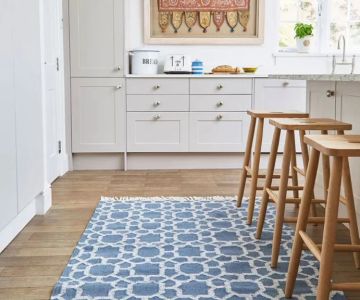


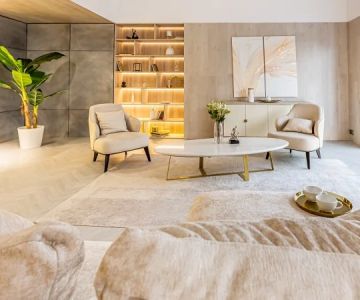
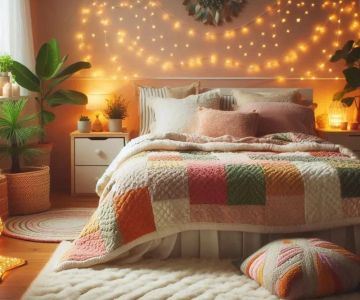
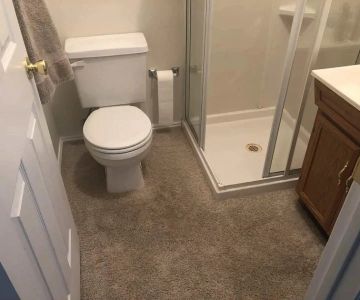
 Burlington4.0 (11 reviews)
Burlington4.0 (11 reviews) Godfrey Family Carpets4.0 (50 reviews)
Godfrey Family Carpets4.0 (50 reviews) The FloorWorks3.0 (23 reviews)
The FloorWorks3.0 (23 reviews) Ted's Flooring & Interior Design4.0 (28 reviews)
Ted's Flooring & Interior Design4.0 (28 reviews) Raymour & Flanigan Furniture and Mattress Store4.0 (1569 reviews)
Raymour & Flanigan Furniture and Mattress Store4.0 (1569 reviews) United Flooring & Supply5.0 (17 reviews)
United Flooring & Supply5.0 (17 reviews) The Best Carpet Options for Family-Friendly Homes
The Best Carpet Options for Family-Friendly Homes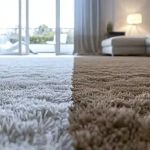 How to Choose the Perfect Carpet for Your Home: A Comprehensive Guide
How to Choose the Perfect Carpet for Your Home: A Comprehensive Guide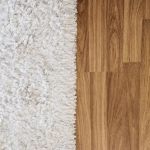 Carpet or Hardwood? Making the Right Choice for Your Home
Carpet or Hardwood? Making the Right Choice for Your Home The Science Behind Carpet Fibers and Their Durability
The Science Behind Carpet Fibers and Their Durability How to Incorporate Carpets in Homes with Hardwood Floors
How to Incorporate Carpets in Homes with Hardwood Floors What to Look for in a Carpet Installer for Your Home: Key Tips for a Perfect Fit
What to Look for in a Carpet Installer for Your Home: Key Tips for a Perfect Fit